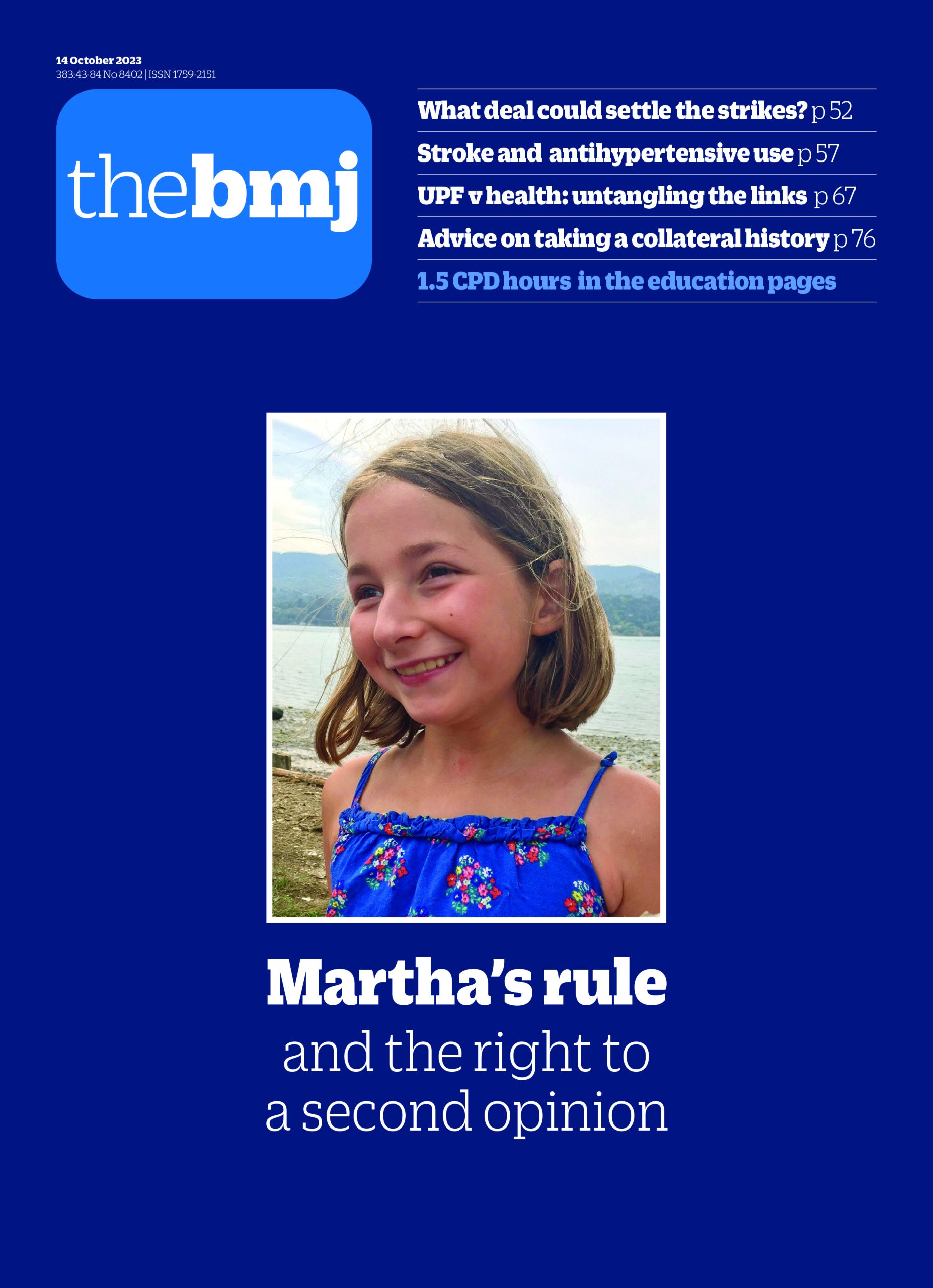Infection
Covid-19: Up to 2% of hospital patients acquired infection after being admitted
- Bryan Christie
- Edinburgh
Between 95 000 and 167 000 patients are estimated to have caught covid-19 in England’s hospitals during the second wave of the pandemic while being treated for other problems.
A study reported in Nature used data from 356 English hospitals, representing almost all NHS general and acute care beds, to calculate the extent of transmission between June 2020 and March 2021.1 Using mathematical modelling it concluded that between 1% and 2% of all patients admitted during this period were likely to have been infected with SARS-CoV-2 in hospital. They then became the main source of transmission to other patients.
The highest rates of transmission were seen in the north west of England and the lowest in the south west and London. Hospitals with the fewest single rooms and the poorest ventilation were found to have higher rates of transmission.
“The findings reveal the previously unrecognised scale of hospital transmission, have direct implications for targeting of hospital control measures, and highlight the need to design hospitals better equipped to limit the transmission of future high consequence pathogens,” said the research report, which was completed by an international team led by the Nuffield Department of Medicine at the University of Oxford.
Acquiring covid in hospital can lead to poor outcomes for already sick patients, puts healthcare workers at risk, disrupts service delivery, and can play a major role in spreading infection to vulnerable groups in the community. The study recommended action on several fronts, including the early identification of infected patients and the adoption of control measures. It said that transmission could be reduced by improving ventilation, using face coverings by patients and staff, increasing distance between beds, minimising the movement of patients, and promoting hand hygiene. It also called for priority to be given to research into effective methods of reducing hospital transmission, including ward design and air filtration systems.
A report from the Health Services Safety Investigations Body in 2020 came to similar conclusions.2 However, David Oliver, a consultant physician and BMJ columnist who worked on covid wards throughout the pandemic, does not believe that change will be easy. “It does not surprise me that so many people caught covid in our hospitals, which are often antiquated, poorly ventilated, and overcrowded,” he said, given that it was very difficult to separate out infected patients, because wards were too full. “The lack of capacity is a problem that is not going to go away any time soon,” he added.
The study said that data from hospitals showed that only 16 950 to 19 355 definite or probable cases of hospital acquired covid infection were reported between June 2020 and February 2021. The authors estimated that the definitions used to classify hospital acquired infections may capture only around 26% of such infections. They therefore combined the reported infection numbers with estimates of the proportion of infections not captured by the classification system. This gave an estimate of hospital acquired infections ranging from 95 000 to 167 000 over the study period.
It acknowledged that a lack of genomic data meant that the study could not conclusively demonstrate transmission but that the findings were in accordance with observations made in local settings where genomic data had been available.
This article is made freely available for personal use in accordance with BMJ’s website terms and conditions for the duration of the covid-19 pandemic or until otherwise determined by BMJ. You may download and print the article for any lawful, non-commercial purpose (including text and data mining) provided that all copyright notices and trade marks are retained.
https://bmj.com/coronavirus/usage

